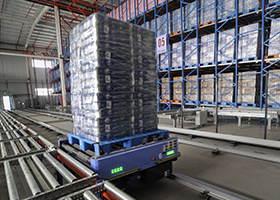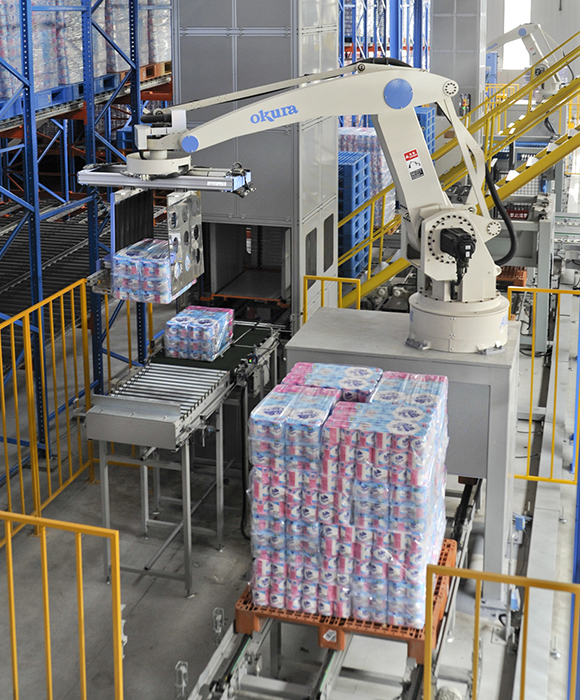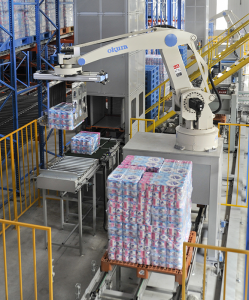Introduction
In the era of smart manufacturing, the convergence of multiple engineering disciplines has given rise to transformative innovations. One such interdisciplinary field is mechatronics, a blend of mechanical, electrical, computer, and control engineering. At the heart of modern industrial automation, mechatronics enables the development of smarter, more flexible, and highly efficient systems.
From intelligent robotics and autonomous transport systems to precise motion control and real-time data integration, mechatronics is redefining the way industries operate. In this article, we’ll explore how mechatronics and industrial automation work hand-in-hand to revolutionise manufacturing processes and improve operational outcomes across sectors.

What Is Mechatronics?
Mechatronics is the synergistic integration of mechanical systems, electronics, software, and control theory to design and create intelligent systems and products. While the term originated in Japan in the 1960s, its application has expanded rapidly in the digital age, becoming a foundational discipline in industrial automation.
Examples of mechatronic systems include:
- Automated guided vehicles (AGVs)
- Industrial robots
- Smart conveyor systems
- CNC machinery
- Precision actuators and servomechanisms
Each of these systems relies on the coordinated interaction of physical hardware and intelligent software to operate autonomously or semi-autonomously within industrial environments.

The Role of Mechatronics in Industrial Automation
Mechatronics serves as the backbone of industrial automation by enabling the design and implementation of systems that are not only functional but also intelligent, adaptable, and connected.
Here are some ways in which mechatronics drives innovation in automation:
1. Intelligent Control Systems
At the core of automated systems is the ability to make decisions based on real-time inputs. Mechatronic systems incorporate sensors, microcontrollers, and control algorithms to monitor processes and adjust outputs automatically. This leads to:
- Enhanced precision in manufacturing
- Reduced human error
- Continuous quality control

For instance, a robotic arm powered by a mechatronic control system can pick and place items with millimetre-level accuracy based on camera vision feedback.
2. Increased System Flexibility
Traditional manufacturing lines are often rigid and time-consuming to reconfigure. Mechatronics enables modular automation systems that can be quickly adapted to new products or workflows. Benefits include:
- Faster production changeovers
- Customisable automation for different product lines
- Reduced downtime during transitions
This is especially important for industries like electronics or consumer goods, where product cycles are short and flexibility is key.
3. Predictive Maintenance and Reliability
With the integration of sensors and IoT-enabled components, mechatronic systems can continuously monitor the health and performance of equipment. Data from motors, drives, actuators, and sensors is analysed to predict failures before they occur.
This predictive capability allows for:
- Scheduled maintenance that minimises disruption
- Reduced unexpected breakdowns
- Longer equipment lifespan
It transforms traditional reactive maintenance models into proactive strategies, saving costs and improving overall equipment effectiveness (OEE).
4. Enhanced Human-Machine Collaboration
Collaborative robots, or cobots, are a prime example of how mechatronics is changing human-machine interaction. Designed to work safely alongside humans, cobots rely on mechatronic design principles for:
- Force-limited operation
- Real-time sensing of human presence
- Intuitive programming interfaces
This allows human workers to handle complex decision-making while automation handles repetitive or hazardous tasks, leading to improved productivity and workplace safety.
Applications of Mechatronics in Automation
The influence of mechatronics extends across multiple sectors of industrial automation:
- Automotive Manufacturing: Advanced robotics, smart assembly lines, and automated inspection systems.
- Logistics & Warehousing: AGVs, robotic palletisers, and automated storage and retrieval systems (ASRS).
- Food & Beverage: Hygienic, high-speed filling, sorting, and packaging machines.
- Pharmaceuticals: Precision dosage systems, cleanroom automation, and track-and-trace solutions.
Each application leverages the integration of mechanical components, electrical systems, and intelligent software to achieve high performance and compliance with industry standards.
Challenges and Considerations
Despite its many benefits, implementing mechatronics in automation is not without challenges. These include:
- System Complexity: Designing and maintaining integrated systems requires multidisciplinary expertise.
- Initial Investment: Mechatronic solutions often involve higher upfront costs, though they provide long-term ROI.
- Skilled Workforce: Training is required to operate, maintain, and troubleshoot advanced systems effectively.
To overcome these challenges, companies should focus on workforce development, collaboration with automation specialists, and phased implementation strategies that align with business goals.
Mechatronics and Industry 4.0
Mechatronics will continue to play a central role as industries evolve toward Industry 4.0—the era of smart, interconnected manufacturing. With the rise of artificial intelligence (AI), machine learning, digital twins, and edge computing, mechatronic systems are becoming more autonomous and data-driven than ever before.
Key developments to watch include:
- AI-enhanced control systems for adaptive automation
- Cloud-connected machinery for real-time performance monitoring
- Integration with cyber-physical systems (CPS) for holistic plant control
As this transformation accelerates, companies that invest in mechatronics today will be better positioned to lead in tomorrow’s industrial landscape.
Conclusion
Mechatronics is not just an engineering discipline – it is a catalyst for innovation in industrial automation. By bridging the gap between mechanical systems and intelligent control, it enables the creation of smarter, more agile, and highly efficient operations.
Looking to elevate your operations with cutting-edge mechatronic automation solutions? Get in touch with Okura Singapore to discover how our integrated systems can future-proof your industrial processes.


